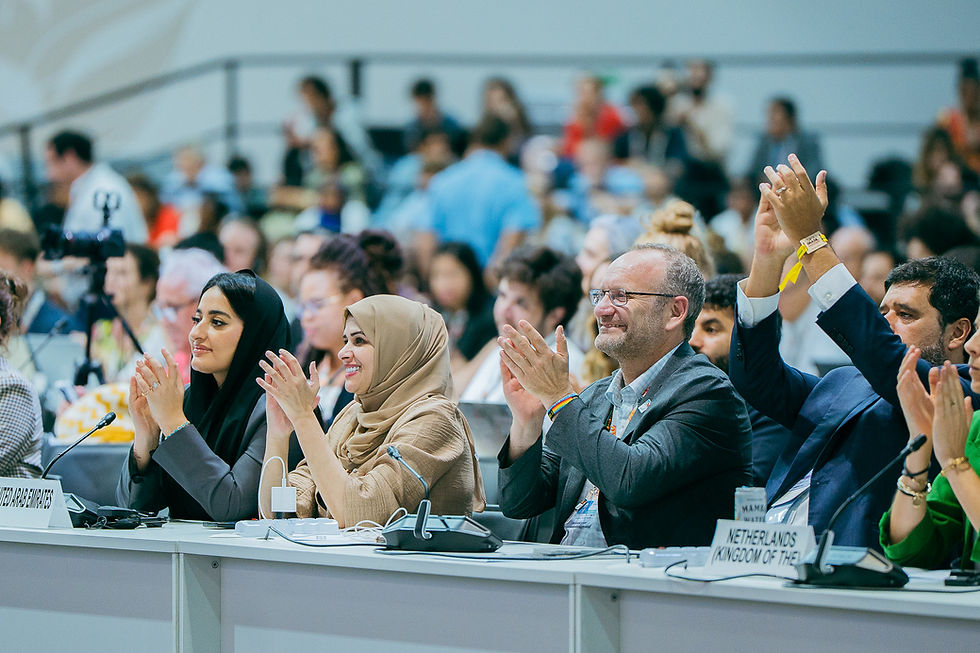Unlocking Capital Flows to Transform Global Food Systems in Southeast Asia
- Beverley Postma
- Sep 10, 2023
- 3 min read
Updated: Apr 1, 2024
Author: Beverley Postma, Executive Director, Grow Asia
This article originally appeared in the Milken Institute's Power of Ideas. For the 2023 Milken Institute Asia Summit, the institute asked #PowerofIdeas contributors to explore how to bridge complexity and opportunity.

Southeast Asia is a vital supplier of the world’s food. In 2019, it was responsible for 90 percent of global rice production. Since then, global reliance on the region’s supply of rice and other crops, such as fruits, vegetables, and coffee, has only continued to rise. As a result, the food and agriculture sector in Southeast Asia is poised for explosive growth against an ever-challenging landscape.
Food production in Southeast Asia is the source of more than 30 percent of global greenhouse gas emissions and 80 percent of deforestation and biodiversity loss. With each passing year, the natural resources that make the region so essential for global food supply are losing their resilience and capacity to produce. Meanwhile, the amount of new land needed to feed the world by 2050 will be almost 600 million hectares—half the size of China. Southeast Asia has the potential to fill this demand gap, but ongoing urbanization, deforestation, and soil degradation mean that the land is not agronomically viable.
The agri-food sector in Southeast Asia is poised for explosive growth against an ever-challenging landscape.
Multiple new studies point to a notable gap in agri-food investments in Southeast Asia, especially for transformational farming practices that could increase yields, reduce land use, protect biodiversity, and reduce emissions. The scale of this transformation represents a significant, and largely untouched, opportunity for investors as companies race to develop technology to equip the 70 million small- and medium-sized enterprises and smallholder farmers with the tools to implement more resilient farming practices.
In Southeast Asia, farmers and governments are receptive to strategies to boost yield, reduce waste, and build resilience. However, the sector continues to lag behind other regions in the adoption of new technology. Such innovations can help farmers monitor crops, control diseases, and apply precision fertilization while reducing labor and waste, yet access to capital to finance this technology remains a major obstacle for the vast majority of rural businesses.
The latest agricultural technological innovations are designed to disrupt problematic production, distribution, and disposal practices that are harming economies and the planet. But capital streams that reach the farm gate are few and far between. Finance models in Southeast Asia have historically failed to provide the necessary capital to de-risk the process, and funders lack the convening power to bring the right players to the table. Furthermore, misconceptions around credit risk, short-term returns, and supply chain capacity remain the biggest hurdles limiting investments. With a market that has the potential to reach over US$33 billion by 2029, tackling these fragmented capital flows requires a new and innovative financial approach involving enlightened stakeholders who can unlock the opportunity for agri-food technology to reach the last mile.
To address this, it is essential that organizations and funders work together. Grow Asia is working with the World Economic Forum and leading companies and governments to mobilize once-siloed actors and sources of funding and channel them into high-value, collaborative projects through strategic public-private partnerships. To date, the organization has deployed blended investments of over US$20 million across six countries in Southeast Asia.
Proof points are now essential to demonstrate how these finance mechanisms are both replicable and scalable. Measurements of reduced emissions and increased yields over multiple crops and seasons are fundamental to reassure investors that sustainable farming is profitable. One example that effectively demonstrates this value is Grow Asia’s Coffee Task Force in Vietnam, which has trained over 50,000 farmers on Good Environmental Practices. The program has already lowered greenhouse gas emissions by 40,000 metric tons of CO2e and reduced the amount of irrigation water used by 21 million cubic meters. This has translated into lowering production costs by US$220 per hectare and generated savings of US$12 million annually for smallholder coffee farmers.
As the globe continues to navigate ongoing crises from the war in Ukraine and worsening impacts from climate change, the opportunity to redesign financing for sustainable food systems has never been more urgent, or more favorable. Southeast Asia requires an estimated US$800 billion of investment in the agriculture sector in the next decade to meet consumer demand. Being able to measure the value of this investment is the critical next step to drive the catalytic funding that is needed to unlock the full potential of sustainable economic growth in the region.



